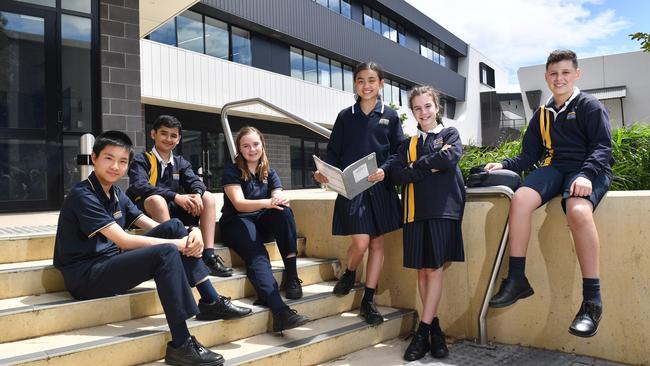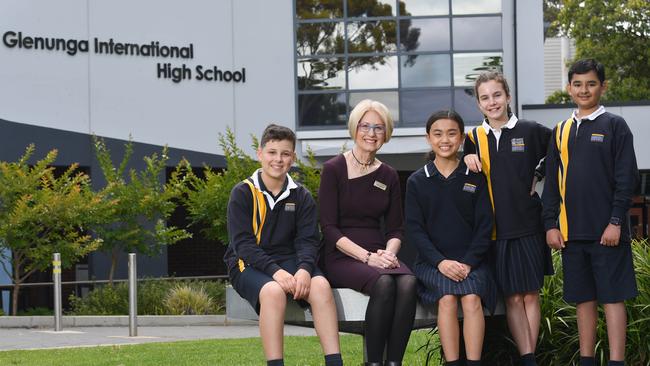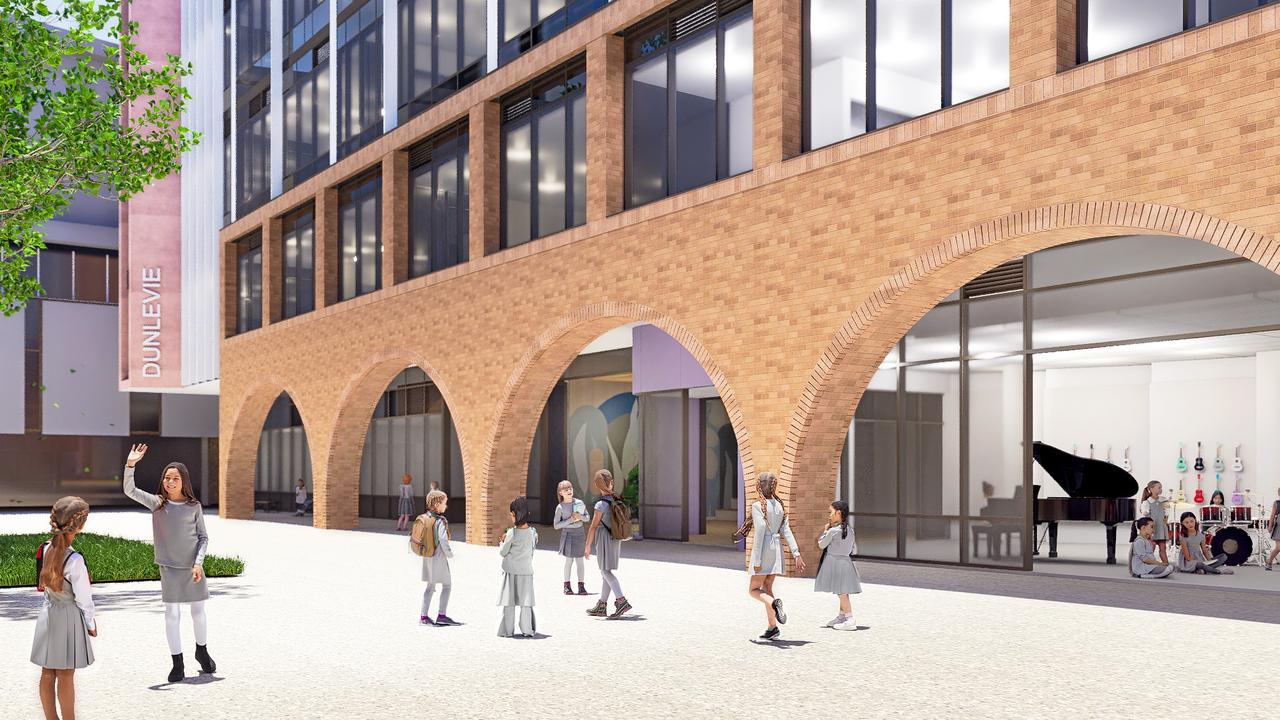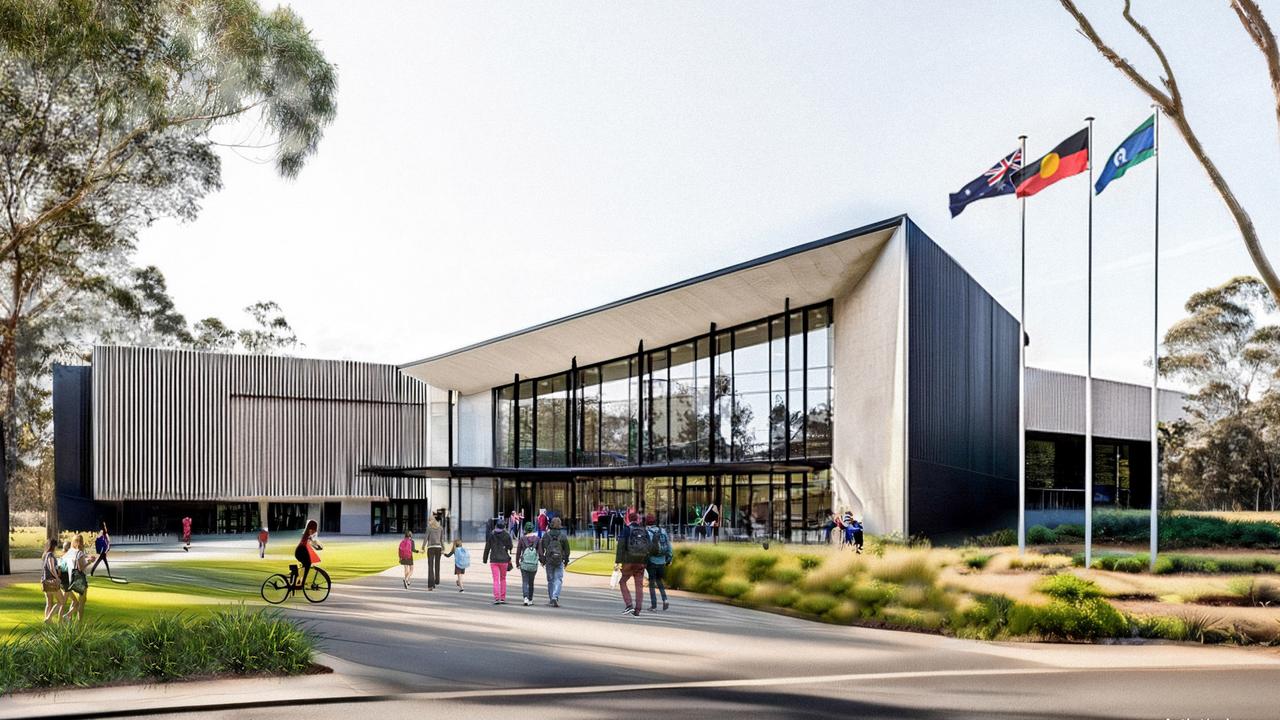Glenunga International High School ranked number one for NAPLAN in South Australia over five years
We’ve analysed SA’s NAPLAN results to see which schools are the best – and if you’re paying for top-dollar private colleges, the results might spark some changes.
Schools Hub
Don't miss out on the headlines from Schools Hub. Followed categories will be added to My News.
A principal has credited a collaborative teaching approach for her public school achieving the highest NAPLAN score across all South Australian schools.
Analysis of 707 public and private schools by The Advertiser shows Glenunga International High School was the top-performing public or private secondary school between 2017 and 2021, with an average yearly result of 3169.0.
This was ahead of three all-girl private schools, which annually charge up to $28,000 for year 12 students – St Peter’s Collegiate Girls’ School at Stonyfell (3161.7), Walford Anglican School for Girls at Hyde Park (3152.8) and Wilderness School at Medindie (3140.3).
Glenunga also finished above Pembroke School at Kensington Park, St Ignatius’ College at Athelstone, St Peter’s College at St Peters, Seymour College at Glen Osmond, and Pulteney Grammar in the Adelaide CBD.

Principal Wendy Johnson said her school had worked tirelessly towards ensuring every student received the full support of teachers to achieve their potential. This included having personalised development plans they could access online with their parents through a database.
“We have been on a journey for the past decade to actually build a school where every student can be successful,” she said.
“Not just the high-flyers, not just some of them, but actually every student. That’s our particular commitment.
“It’s reflected not only in our NAPLAN results but also in our SACE results and our IB (International Baccalaureate) results.”
Ms Johnson said her teaching staff knew all of the school’s 2230 students intimately, which helped them to deliver personalised care.
Among them were students admitted under a long-running state program developed for high achievers, Ignite, while others included fee-paying overseas students.
“I know some people think we are a large school by South Australian standards but we know every one of our students,” Ms Johnson said.
“We have wonderful pastoral care processes in place to take care of them and work with them in a learning partnership so we can support and stretch every one of our students.”
Ms Johnson said students had individual profiles so they could access “all of their data so they can see where they start from at the beginning of the year and where they finish at the end of the year”.
Glenunga also had gone from largely being a “monocultural” school in the 1990s to a diverse multicultural campus after the introduction of overseas students. Its feeder primary schools also regularly provided new students from various cultural backgrounds.
Among them was Linden Park Primary School, ranked as the top government primary school with the highest NAPLAN average score for year 5 students with 2744.5.
This was just below the highest-ranked private primary school, St Andrew’s School at Walkerville, which had a total score of 2760.3.

Other high-ranking public primary schools included Burnside, Highgate, Norwood, East Marden, Glen Osmond and Marryatville.
Apart from St Andrew’s, other high-performing private primary schools were Immanuel Primary School at Novar Gardens, St Peter’s Lutheran School at Blackwood, St Catherine’s at Stirling and St Mary’s Memorial School at Glenelg.
The highest-ranked combined R-12 school for year 9 students was St Peter’s Collegiate Girls’ School at Stonyfell (3161.7), followed by Walford (3152.8), Wilderness (3140.3), Pembroke (3137.5), Saint Ignatius (3102) and St Peter’s College (3093).
However, while the top overall score for a secondary school went to Glenunga, it was well down in national rankings at 67th, while Linden Park only just made it into the top 100, in 99th place.
Opposition education spokesman John Gardner said the former Liberal state government deserved credit for the high NAPLAN scores achieved by public schools.
“We created a strong foundation for growth, with South Australia’s NAPLAN results improving each year since 2017, but more work needs to be done,” he said.
“When Labor was last in power, SA was at the back of the class but our state and schools are improving. We are now well ahead of Tasmania and Queensland.”
Mr Gardner said “substantial literacy reforms” by the Liberals, including a basic phonics check, “were having an impact”.
Education Minister Blair Boyer said the NAPLAN results revealed long-term improvement in most areas.
“This is a testament to the fantastic work that teachers do every single day educating students,” he said. “However, it is clear there is still room for improvement, which is why the Malinauskas Labor Government is taking action, such as implementing a mathematics improvement strategy, as well as investing $50m into mental health and wellbeing for students alongside academic support.”




